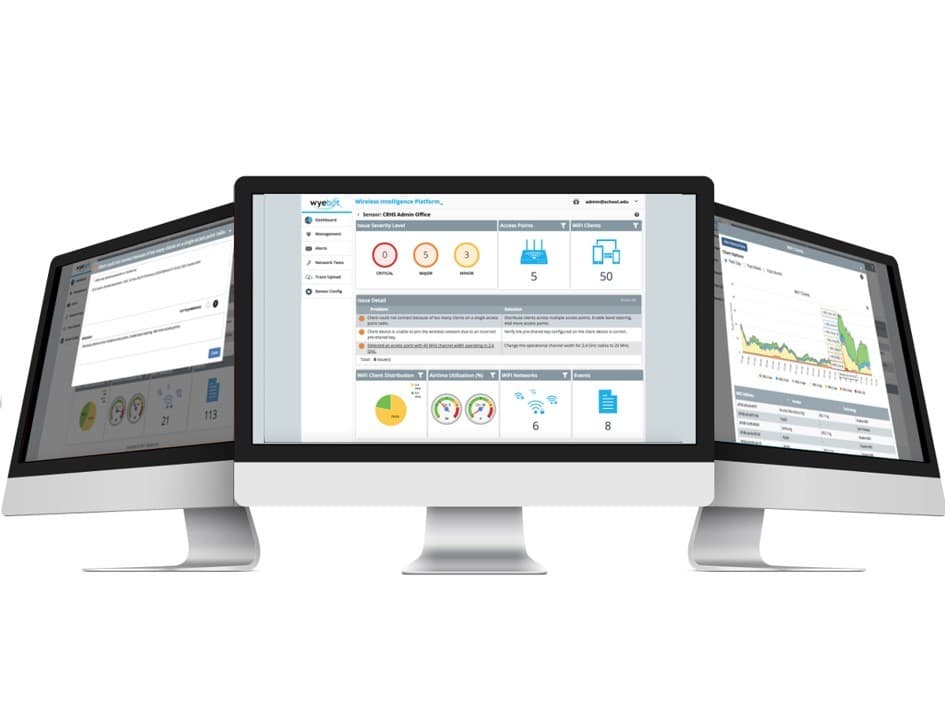// AUTOMATION //
A look at the prosumer approach
Will Decarbonization Impact Future Data Center Designs?
When it comes to optimizing Wi-Fi networks, IT teams have their work cut out for them. A single network can consist of hundreds or thousands of devices in a manufacturing facility, all of which must be monitored in real time for true, assured optimization. This is a difficult, if not impossible, task for humans — and one that grows exponentially more difficult for teams responsible for multiple facilities. This is because real-time optimization depends on the ability to analyze thousands of data packets a second in order to pinpoint existing or possible issues proactively and resolve them before critical business processes are affected.
Since networks have evolved into vast ecosystems, the best and most cost-effective way to scale manufacturers' IT departments and achieve this real-time optimization is with the use of Wi-Fi automation platforms.

Wi-Fi automation platforms deliver the analytics and insights needed for proactive, assured optimization, no matter where networks are located.
Photo courtesy of Wyebot
These platforms automate the processes needed to optimize a network, including monitoring and testing. They complement management platforms in that they monitor not only a business’s personal Wi-Fi network but also any nearby networks operating in the same airspace as well as any non-Wi-Fi interference in the area. They can be (and should be for the best ROI) proactive and remote-capable. Their job is to provide instant alerts to IT on anything that signifies “bad news” for the network. This allows IT teams to quickly resolve issues to protect end user productivity and focus on other critical tasks and responsibilities. Finally, these platforms scale easily — whether needed in five offices or 500.
A few specific ways these platforms save distributed enterprises time and money are listed below.
Optimize Business Continuity With Proactive Problem-Solving
Wi-Fi is dynamic. The network constantly changes throughout the day and night as employees move around a building, devices connect and disconnect, software updates, neighboring networks update, and more. Optimizing this ecosystem and enabling businesses to maintain a high level of performance therefore requires not only constant visibility into the network but also proactive alerts for all questionable network behavior.
Many network issues are intermittent. A problem might occur on a Tuesday afternoon and not show up again until two days or a week later. If the problem is reported immediately, and if IT is on-site and can perform packet capture right then, teams are on their way to problem resolution. Of course, packets still have to be analyzed so the root cause of the problem can be identified, and this can take quite some time. If IT wasn’t able to capture packets when the problem was reported, which is common in distributed enterprises when teams are responsible for multiple locations, they have to wait for the issue to strike again. As there is no telling when this might happen, and teams are far too busy to sit around and wait at a certain location for hours or days at a time, this makes problem resolution difficult, time-consuming, and costly.
Issues also have a number of possible causes. For instance, a dropped Wi-Fi connection could be caused by low signal strength, interference from Wi-Fi devices, interference from non-Wi-Fi devices, mismatched device and AP settings, physical obstructions like walls, a need for a device or AP upgrade, or more. When IT receives a report of an issue, even if the issue itself seems easy to define, teams can’t implement a resolution until they know exactly what caused the issue, and that isn’t always easy to determine.
This all spells trouble for business continuity. Not only are employees unable to work (some estimates assume a day of lost productivity a week based on Wi-Fi issues), but they can also become frustrated and start looking for other jobs if the problems are persistent enough. Customers can also be turned away by Wi-Fi issues. For example, a slowly loading website directly leads to a decrease in conversions. Businesses depend on Wi-Fi, so issues need to become a thing of the past. Barring that, they need to be resolved before they impact end users.
This is where proactive Wi-Fi automation shines.
Depending on the platform used, companies receive proactive alerts in two ways. First, platforms can learn to recognize normal network behavior and then alert IT if that behavior changes in any way. Secondly, platforms can perform scheduled or manual network testing and then immediately report any failed tests to IT. This allows IT to be notified at the onset of any issues rather than forcing teams to wait to reactively respond based on a problem ticket.
Secure Remote Locations and Reduce Site Visits
Whether IT teams are responsible for locations in the same city or on different continents, they can’t be everywhere at once. Remote-capable Wi-Fi automation platforms help with the difficulties associated with these wide areas of responsibility in a few ways.
Reduce remote site visits — First and foremost, a remote-capable platform reduces the necessity for IT to travel on-site to optimize a network. The platform should allow IT to troubleshoot and resolve all problems from any location at any time.
Complete visibility into the network — This should include alerts for any security concerns, such as unknown or unauthorized APs that connect to the network, as well as any open ports. This allows IT to monitor network security from a distance.
Schedule network tests — Scheduled tests provide constant insight into network health and performance. This gives IT expert-level knowledge of end user quality metrics and the status of the network, even when teams can’t be on-site.
Bottom Line
Intermittent Wi-Fi problems, long travel times, and delayed resolutions are costly for distributed enterprises. Wi-Fi automation platforms deliver the analytics and insights needed for proactive, assured optimization, no matter where networks are located.
Roger Sands
Roger Sands is co-Founder and CEO of Wyebot Inc. He has 17 years of executive management positions in successful networking startups and Fortune 500 companies. Her holds master’s and bachelor’s degrees in electrical engineering from Northeastern University.

Image courtesy of [metamorworks]/[Collection iStock / Getty Images Plus via Getty Images.

